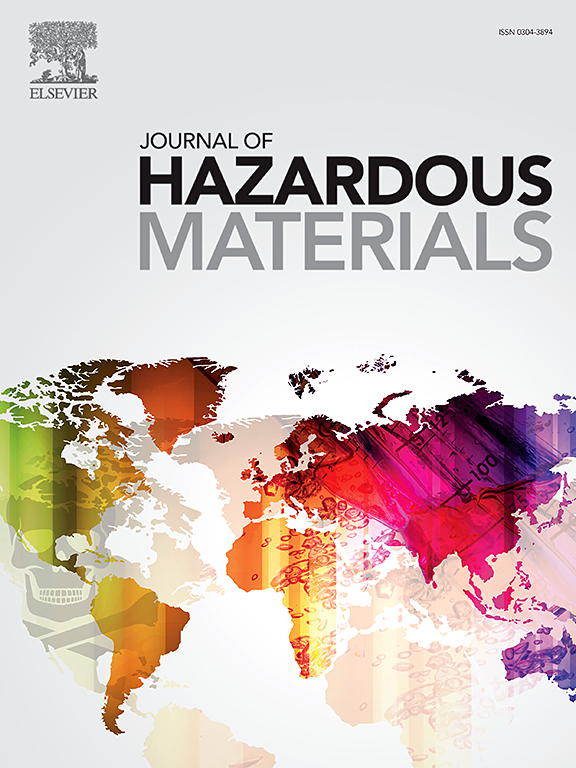Occurrence, removal and ecological risk assessment of antibiotics in rural domestic wastewater treatment systems in the Beijing-Tianjin-Hebei region
IF 11.3
1区 环境科学与生态学
Q1 ENGINEERING, ENVIRONMENTAL
引用次数: 0
Abstract
The pervasive usage of antibiotics has raised increasing concerns regarding their discharge into the environment through domestic wastewater. Relevant studies on antibiotics in rural domestic wastewater has mainly focused on their occurrence characteristics and environmental risks, leaving aside the effectiveness of different wastewater treatment processes and their correlation with conventional pollutant removal. Meanwhile, the antibiotic features across the Beijing-Tianjin-Hebei (BTH) region remain unclear. In this study, 13 rural domestic wastewater facilities, using Anaerobic-Anoxic-Oxic (A2/O) and Anaerobic-Anoxic-Oxic processes with Membrane Bioreactor (A2/O+MBR) processes, in the BTH region were investigated. A total of 22 antibiotics were detected at μg/L levels in both influent and effluent, including enrofloxacin, ciprofloxacin, norfloxacin, and oxytetracycline. There was no significant difference in the removal efficiency of most detected antibiotics between the A2O and A2O+MBR processes. In anaerobic and anoxic units, tetracyclines were significantly removed, and azithromycin removal was significantly positive in relation to chemical oxygen demand. While aerobic units showed broader antibiotic removal, and the removal of total nitrogen was significantly negative in relation to most quinolones (QNs). Three facilities were identified as high-risk due to high effluent risks, which require further treatment. The high-risk antibiotics in the effluents were predominantly QNs (73.9%).

京津冀地区农村生活污水处理系统中抗生素的发生、去除及生态风险评价
抗生素的普遍使用引起了人们对其通过生活废水排放到环境中的担忧。农村生活废水中抗生素的相关研究主要集中在其发生特征和环境风险上,而忽略了不同废水处理工艺的有效性及其与常规污染物去除的相关性。与此同时,京津冀地区的抗生素特征尚不清楚。本研究以北京地区13个采用厌氧-厌氧-氧化(A2/O)工艺和厌氧-厌氧-氧化-膜生物反应器(A2/O+MBR)工艺的农村生活污水处理厂为研究对象。在进水和出水中检测到22种抗生素,浓度均为μg/L,包括恩诺沙星、环丙沙星、诺氟沙星和土环素。A2O和A2O+MBR工艺对大多数检出抗生素的去除率无显著差异。在厌氧和缺氧装置中,四环素被显著去除,阿奇霉素的去除率与化学需氧量呈显著正相关。而好氧单位表现出更广泛的抗生素去除,并且与大多数喹诺酮类药物(QNs)相比,总氮的去除率显着为负。三个设施被确定为高风险设施,因为它们的排放风险很高,需要进一步处理。出水中高危抗生素以QNs类为主(73.9%)。
本文章由计算机程序翻译,如有差异,请以英文原文为准。
求助全文
约1分钟内获得全文
求助全文
来源期刊

Journal of Hazardous Materials
工程技术-工程:环境
CiteScore
25.40
自引率
5.90%
发文量
3059
审稿时长
58 days
期刊介绍:
The Journal of Hazardous Materials serves as a global platform for promoting cutting-edge research in the field of Environmental Science and Engineering. Our publication features a wide range of articles, including full-length research papers, review articles, and perspectives, with the aim of enhancing our understanding of the dangers and risks associated with various materials concerning public health and the environment. It is important to note that the term "environmental contaminants" refers specifically to substances that pose hazardous effects through contamination, while excluding those that do not have such impacts on the environment or human health. Moreover, we emphasize the distinction between wastes and hazardous materials in order to provide further clarity on the scope of the journal. We have a keen interest in exploring specific compounds and microbial agents that have adverse effects on the environment.
 求助内容:
求助内容: 应助结果提醒方式:
应助结果提醒方式:


